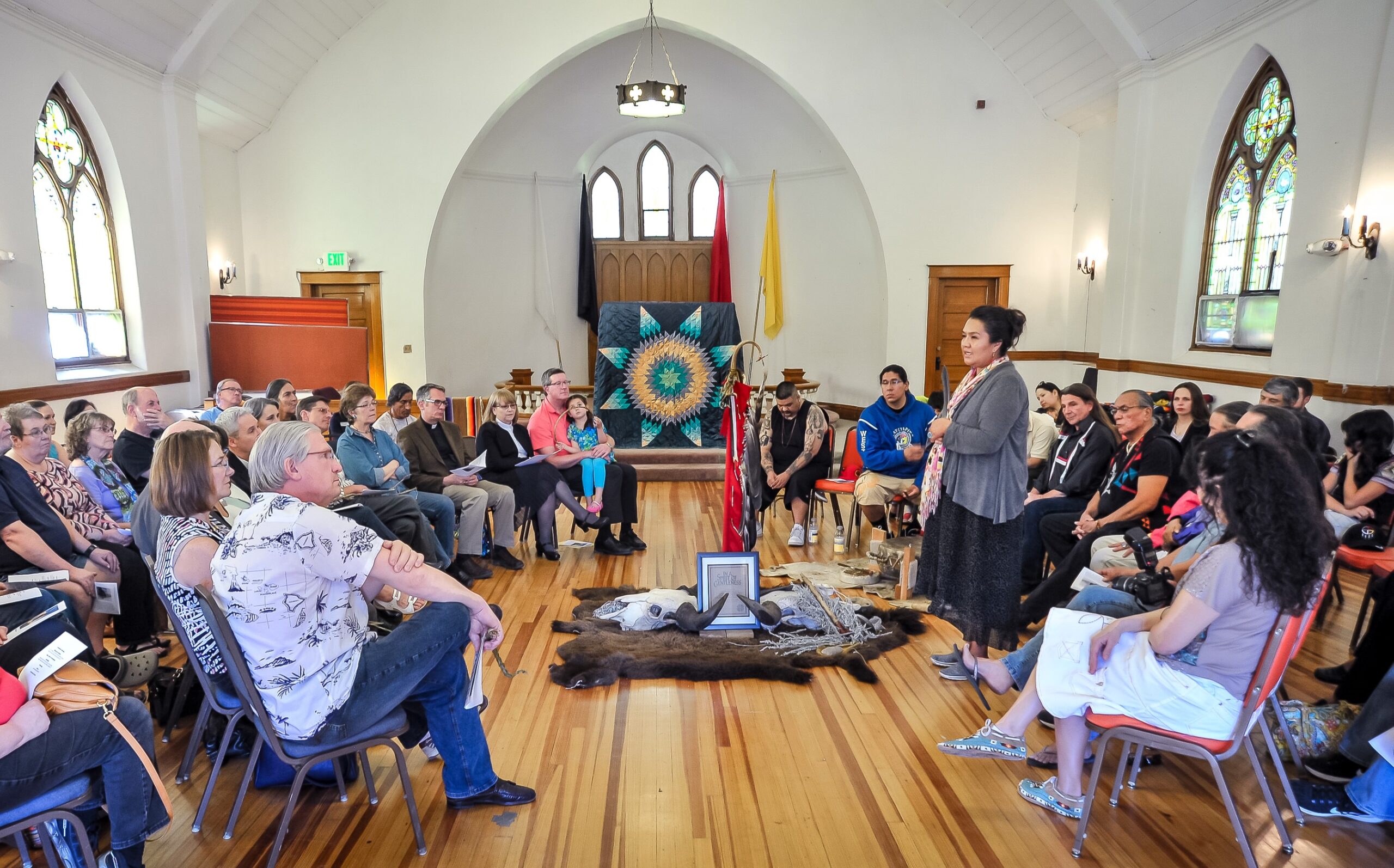The Time for Return
The Time for Return
By Caleb Rollins
Sometimes the right use for a church building takes time to become clear. For one plot of church land near downtown Denver, this process took over a century. In the early years of the twentieth century, a congregation of Danish American Lutherans wanted to build a larger gathering place for their growing community. They found a plot of land at Fifth and Bannock Street to construct a building that would serve Bethany Danish Lutheran Church for sixty years. Upon the closure of the congregation in 1973, the building was turned over to a predecessor denominational body of the Evangelical Lutheran Church in America (ELCA). For the next few years, a Lutheran social service agency used the building, and then a joint ministry between Lutherans and Episcopalians filled the space. Yet one tenant that began meeting in the building in the late 1980s brought lasting life and purpose to the old church building.
Four Winds American Indian Council, formed in 1989, is an organization and community committed to supporting the liberation of all indigenous people and lands. The group began using the old church building still owned by the Rocky Mountain Synod of the ELCA, on a rent-free basis, to deepen connections among the native community in the Denver area. One member of the Four Winds community, Jolynne Locust Woodcock, expressed appreciation for how the space allowed community to gather for important and sacred events. “Just to have that place, somewhere that we can gather for birth and death and all that comes in between, is a gift,” reflected Woodcock.
In the early 2010s, real estate prices around the old building were increasing, and the Rocky Mountain Synod of the ELCA had the opportunity to sell the building and land for a substantial profit. Bishop Jim Gonia of the synod remarked, “The white American thing would be to make a profit off this building, which was sitting in a critical spot in Denver and could have netted possibly a million dollars.” However, in the decades of partnering with Four Winds, the synod and its members had developed relationships with indigenous leaders in the area. Some Lutheran leaders, including local pastor Rev. Dena Williams, felt uneasy with displacing the Four Winds community through the sale of the property. They wondered why the ownership of the land could not be turned over to Four Winds American Indian Council as a small but meaningful act of decolonization.
Part of the barrier to this seemingly reparative next step in the land’s history stemmed from some hesitation to participate in the Euro-American logic of land ownership. “Some Four Winds members were adamantly opposed to the entire concept of ownership of land,” said Williams.
Intentional and earnest conversations between the Lutherans and Four Winds community continued over the next few years. Ultimately, a task force from the ELCA synod and the Four Winds American Indian Council drafted a joint resolution that the land would be formally transferred to Four Winds, and Four Winds gained the nonprofit status necessary for legal land ownership.
In early 2015, the property formally changed hands to the Four Winds American Indian Council, and it continues to serve as a “liberated zone” in the heart of Denver for indigenous peoples. Reflecting back on this process, Rev. George “Tink” Tinker, renowned theologian and founding member of Four Winds, wondered about the possibilities that this just land return and others like it open for church bodies. Tinker encouragingly imagined, “And that becomes a role model to the rest of the euro-colonial world, the colonizer world. What churches in the United States are not on Indian land?” The Lutheran community in Denver came to this resolution after years of ministry, learning, and discernment, perhaps showing a way forward for other faith communities.
This story is part of Lake Institute’s story collection, the Faithful Generosity Story Shelf, which highlights congregations and other religious organizations who have sought to use their assets and resources in creative—and sometimes surprising—ways as an expression of faithful giving.
Each entry in our Story Shelf is short enough to be read and discussed during a committee meeting or other group gathering. Our hope is that these accessible vignettes will spark new questions, conversation, and imagination among clergy and laity about what might be possible with the funds, buildings, land, and other resources in their care. If you know a story that should be included in the Story Shelf, suggest it here.
Subscribe
Insights is a bi-weekly e-newsletter for the religious community and fundraisers of faith-based organizations that provides:
- Reflections on important developments in the field of faith and giving
- Recommended books, studies and articles
- Upcoming Lake Institute events

